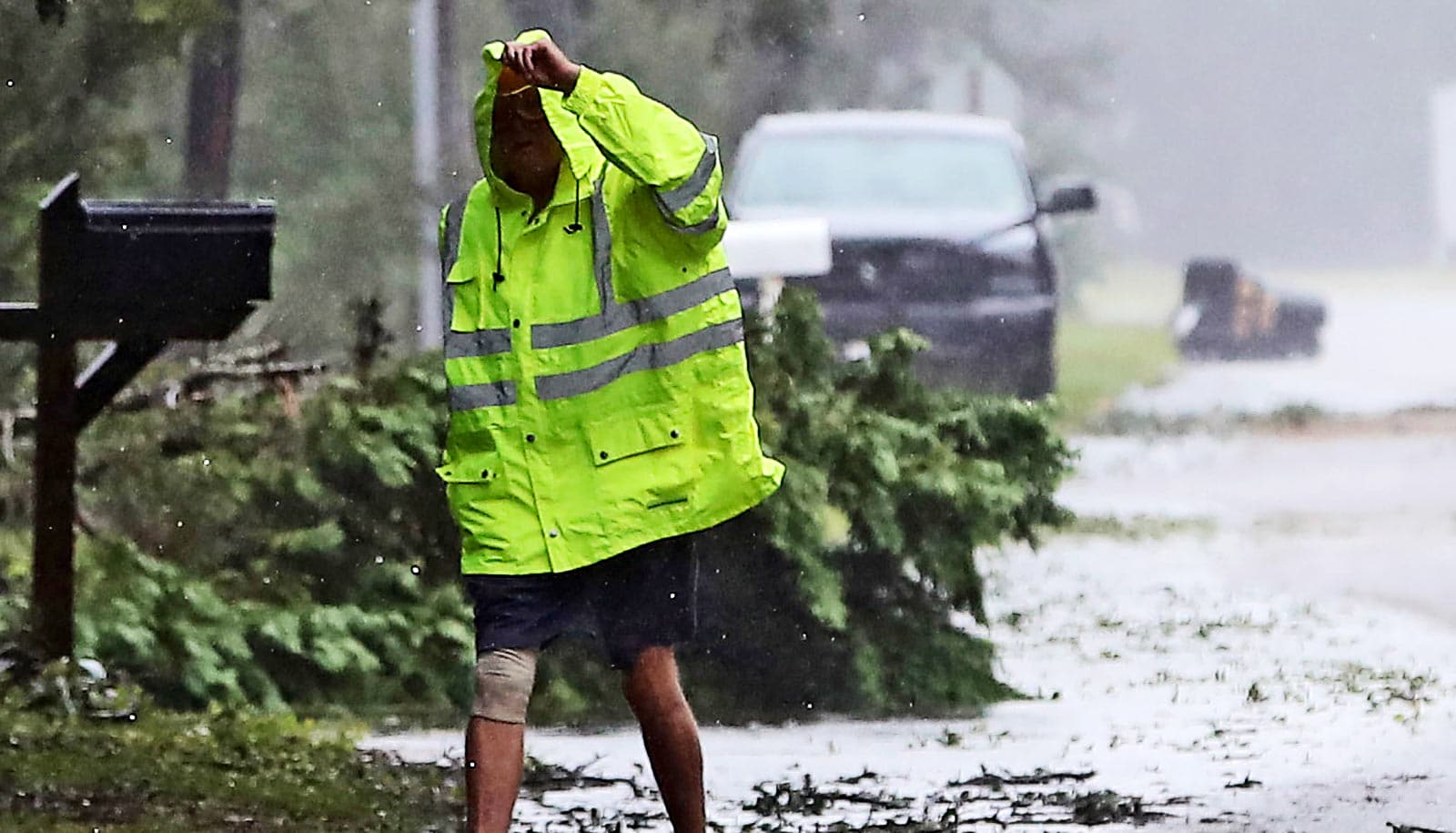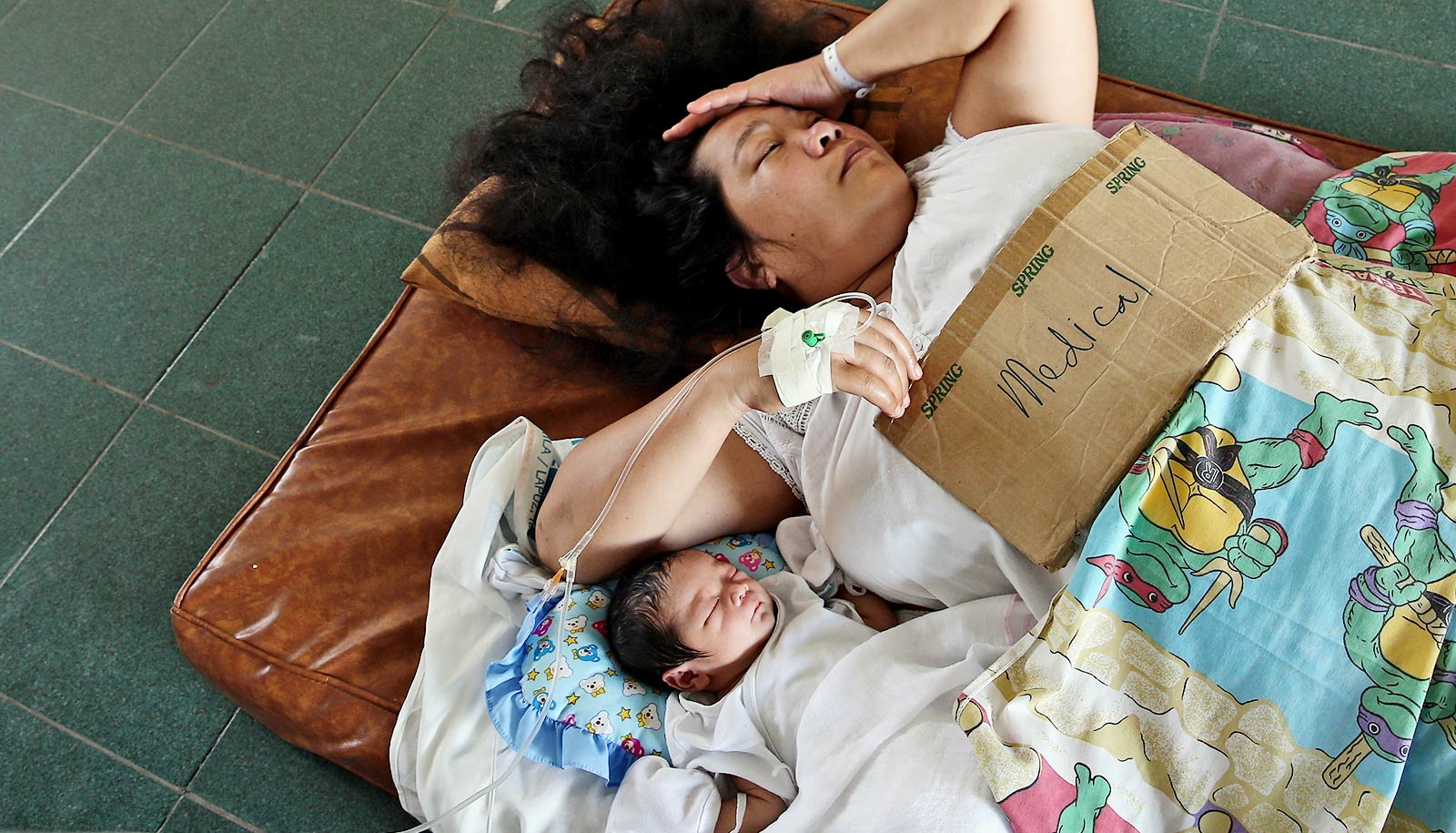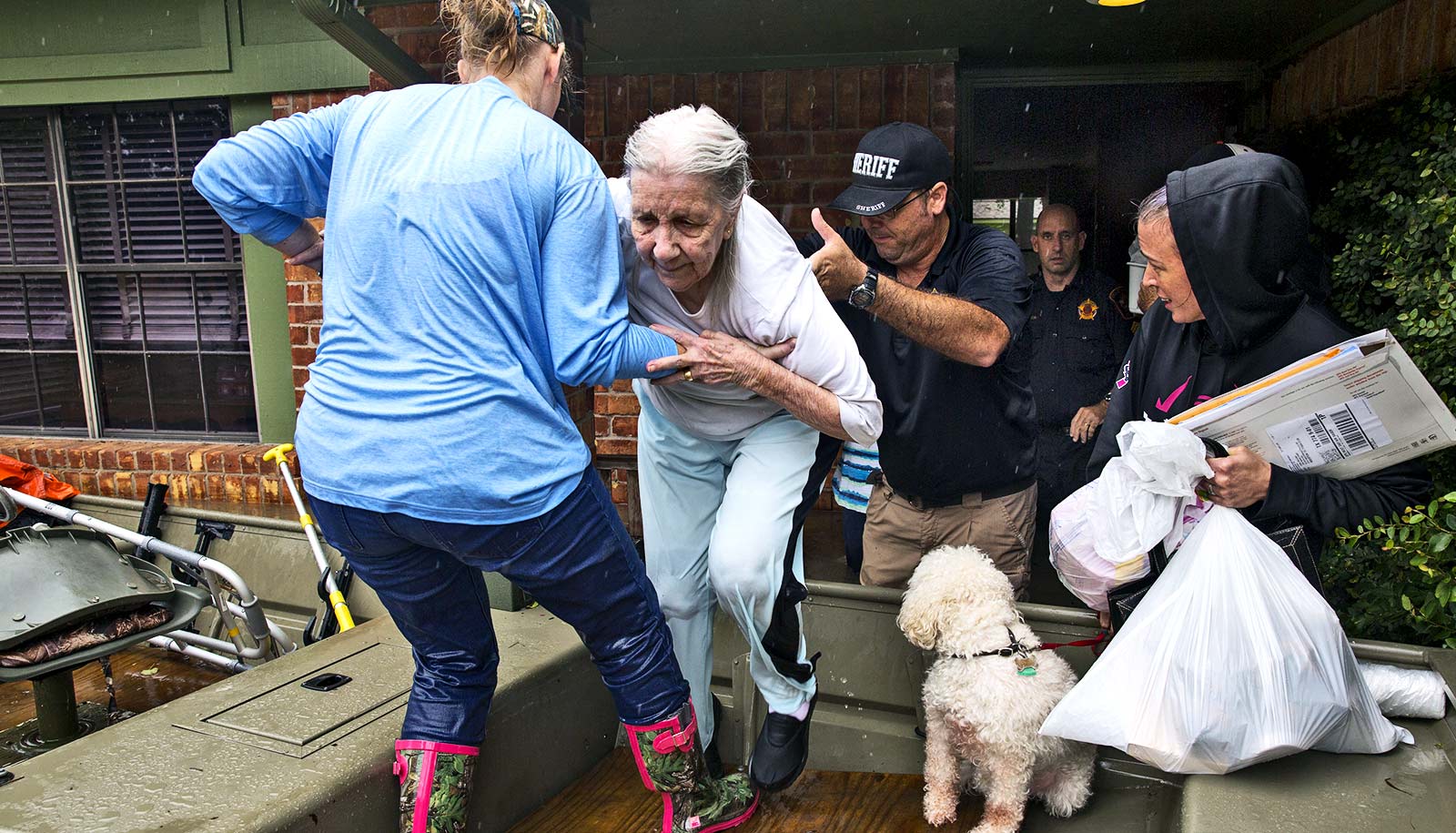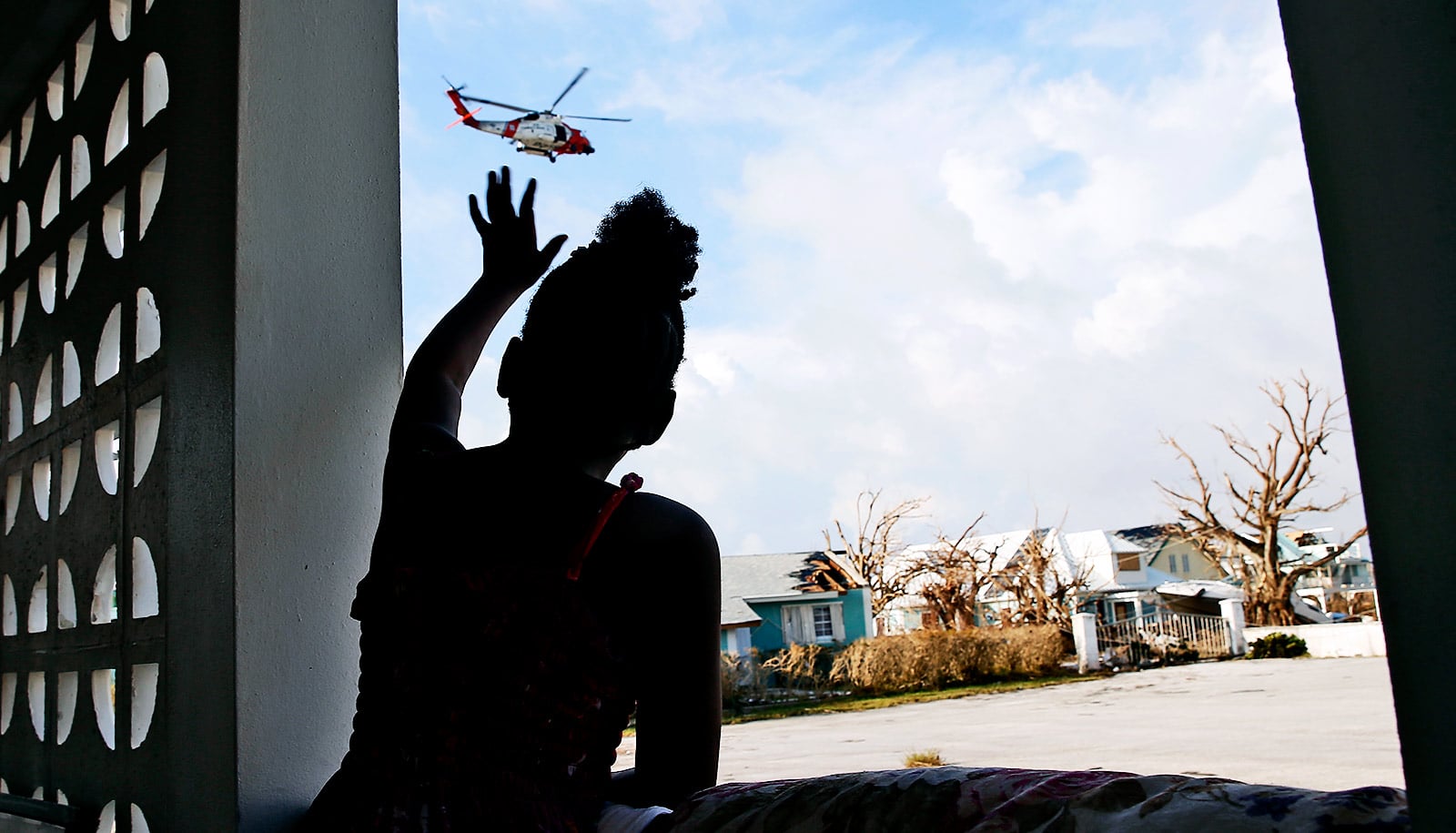In the wake of Hurricane Dorian, which the National Weather Service called one of the most powerful to make landfall in modern history, two experts discuss how to prepare for—and recover from—a storm.
The hurricane’s 185 mph winds and rampant flooding devastated the Bahamas, left scores dead, and more than 70,000 without food or shelter. We’ll likely see more tropical storms and hurricanes this fall, and future storms may rival Dorian’s strength, researchers say.
And while it may not be possible to link any single hurricane directly to climate change, research does indicate that warmer ocean and air temperatures are making storms more intense and destructive.
Unfortunately, public concern does not always correspond with these new realities, researchers say. “More than half of all Americans do not prepare for disasters,” says Robyn Gershon, a clinical professor of epidemiology at the New York University College of Global Public Health.
Gershon studies what helps and hinders preparedness—for instance, how nurses fared working in challenging conditions during Hurricane Sandy. Her work—which includes more than a dozen large-scale studies of disasters—has informed policy and practice. Her World Trade Center Evacuation Study, for example, helped lead to the first changes in New York City’s high-rise fire safety codes in more than 30 years.
Her colleague David Abramson, clinical associate professor of social and behavioral sciences at the College of Global Public Health, directs the research program on Population Impact, Recovery, and Resilience. His team has studied the long-term health consequences of hurricanes Katrina and Sandy, along with other natural and human-made disasters.
Together, they co-direct NYU’s new Advanced Certificate in Public Health Disaster Science, Policy, and Practice. Here, the researchers discuss how we can prepare for disasters—and what factors allow to us to bounce back in the wake of a major storm:
Is storm preparedness on the mind of the average American?
Gershon: According to the latest FEMA surveys, 21% of a US sample stated they were not planning to do any disaster preparation and 46% reported that preparedness was not at all on their radar. There are several reasons people do not prepare: they do not want to think about it, it’s too complicated, it costs too much, and they simply do not know what steps to take.
When is evacuating a good idea?
Gershon: People should evacuate if there is a chance of flooding. People are generally safer in a shelter—there may even be healthcare available and refrigerators for medications.
Some deaths in the Bahamas due to Hurricane Dorian resulted when people were trapped by flood waters inside their home and drowned. If people are going to try and ride it out at home—and they in fact live in a home—they need to ensure they can escape from the roof. Some people in Hurricane Katrina survived because they brought saws and other tools up into their attics and were rescued from the roofs. Not everyone can do that, so the best you can do is evacuate to a designated shelter.
It’s even important to evacuate if you’re in a high-rise building, where the threat is not from drowning, but lack of power. Apartments on high floors can become a trap for days or longer without power, water, working toilets, and refrigerated food.
When preparing for a hurricane, many people know to board up their windows and have nonperishable food and drinking water on hand. What are some other critical steps people should consider?
Gershon: People should fill their car with gas and to park it in a place, if possible, that will be spared from damage. This will allow them to leave the area after the event. Also, people should keep spare cash in their homes in case ATMs are down because of a lack of power. It’s also good to have a back-up power supply for cell phones—for example, I just bought a very inexpensive solar-powered cell phone charger.
What populations are particularly vulnerable in natural disasters, and how can agencies or individuals better support them?
Abramson: Any group in a community that has been socially isolated, under-resourced, or marginalized before the event, or that is highly dependent upon functioning health and human services, is at far greater risk in a disaster’s aftermath.
This can include those who are impoverished, recent immigrant populations, individuals with physical or developmental disabilities, people with complex medical conditions or treatment regimens, homebound elders, and those with mental health or addictive disorders, among others.
One group often overlooked is children, who are simultaneously resilient and vulnerable. In one study of children’s mental health post-Katrina, over one-third of the displaced and heavily affected children in Louisiana and Mississippi experienced significant emotional distress five years later.
Children often recognize when adults are under extreme stress and will hide their own concerns from their parents so as not to burden them.
Parents, caregivers, and teachers, in particular, should be alert to unusual behaviors, whether those are internalizing (becoming depressed or withdrawn) or externalizing (acting out or misbehaving).
Better preparation before a storm can help, both at the individual and household level, and at the level of the organizations serving them.
Community-based service providers should pay attention to their “continuity of operations planning” before events strike, so that they are able to readily return to work afterwards. Furthermore, they can develop preparedness checklists to review with their clients, and provide resources to help them.
Gershon: Governments are required to provide shelter for vulnerable populations. In fact, local governments are getting much better at anticipating what the community needs in the hours or days before the hurricane impacts. I noticed that they are more mindful of having extra gas deliveries so that local gas stations do not run out.
At the individual level, many communities have a variety of volunteer opportunities, such as joining a Community Emergency Response Team or Neighborhood Emergency Response Team, where people not only learn how to better prepare themselves and their families, but can serve as a valuable resource to their communities.
During Superstorm Sandy, New York City teams checked on elderly people in high rises, helped to distribute food and water, and were helpful in myriad other ways. People can also volunteer for the American Red Cross.
This is community response in action. When we all do our part, we free up more specialized resources—such as search and rescue—to do theirs.
What factors make some people more resilient in the period after a disaster?
Abramson: Resilience is often predicated on the resources available to individuals, households, and communities, and to the social connections they can rely upon. The resources that support resilience are not only economic ones—although those are often important, and can include savings, credit, and appropriate insurance coverage—but also include social and political resources as well as physical health and psychological resources.
Disaster survivors who are engaged in helping others in their community, if they are able to, often find a great deal of self-fulfillment. Those who have strong social networks of friends, families, and co-workers, or who belong to civic, social, or religious organizations, are often the most resilient in the face of catastrophic trauma.
Building these connections often begins well before a storm strikes, but these connections can also be developed in a storm’s aftermath. The Vietnamese community in New Orleans provided a wonderful example of community resilience at work as they rebuilt their community after Hurricane Katrina. They united around a major faith-based organization, and used their own voluntary resources—including those contributed by other Vietnamese communities from across the country—to begin their reconstruction within three weeks after the hurricane.
Gershon: In our study of World Trade Center survivors, we found that those who were more prepared to evacuate had less PTSD and other mental health problems. I truly believe that preparedness is an important factor in resilience against long-term adverse health and mental health problems. People who are prepared have self-efficacy; they feel some self-agency and feel that this helped them to survive. They don’t feel like victims, even if they were injured.
What are the key lessons we’ve learned from major storms over the past couple of decades?
Abramson: Effective local governance is among the best predictors of a speedy recovery, but it is not the only critical factor. Recovery occurs more rapidly in those communities in which the health and human services systems are able to rapidly return to full operations and expand their services to meet survivors’ needs, and in which there are mechanisms by which they can effectively coordinate their activities alongside federal and state recovery services.
In disaster situations in which large numbers of people are displaced from their homes, it has also been shown that stabilizing housing situations, allowing people to be transitionally housed near their home community, and re-opening schools all accelerate reconstruction and recovery. The quicker that families can return to their routines—such as sending children back to school—the easier it will be on the parents to manage the stressful and time-consuming process of rebuilding.
Gershon: Fortunately, our weather prediction models are getting much more sophisticated. We now have more warning of these catastrophic storms, and this gives us more time to remove communities from harm’s way. What we don’t yet have is meaningful early warnings for tornadoes or earthquakes. For earthquakes, at least, these are under development, (and already in place in Japan—but only with a few minutes of warning). We should have earthquake warnings here in the U.S. within a few years.
How can people not affected by a disaster best help those in need?
Abramson: Too often communities are overwhelmed with trucks full of miscellaneous supplies donated by well-meaning individuals. Inevitably, the disaster-struck communities have to spend time sorting and cataloguing such donations, and often end up throwing out goods that may be in poor condition or a poor match for the survivors.
Financial donations, on the other hand, offer the disaster-struck communities the most flexibility and are often more appreciated. Many localities develop government-run funds specifically for the purpose of receiving and equitably distributing donations—as Boston did after the marathon bombing.
It’s also helpful to keep in mind that approximately 80% of a disaster’s cost is incurred during the recovery phase, long after the media attention has dimmed. Consider targeting donations to those organizations explicitly engaged in disaster recovery activities, or time your donation for several months after the initial response phase has ended.
For individuals who want to provide more direct help, there are a number of organizations engaged in disaster relief and recovery services. Consider joining your local health department’s Medical Reserve Corps, often composed of physicians, nurses, social workers, paramedics and EMTs, and other affiliated professionals. And there are a number of organizations that train and send volunteers to help disaster-affected communities, including Team Rubicon, Habitat for Humanity, and SBP, among others.



